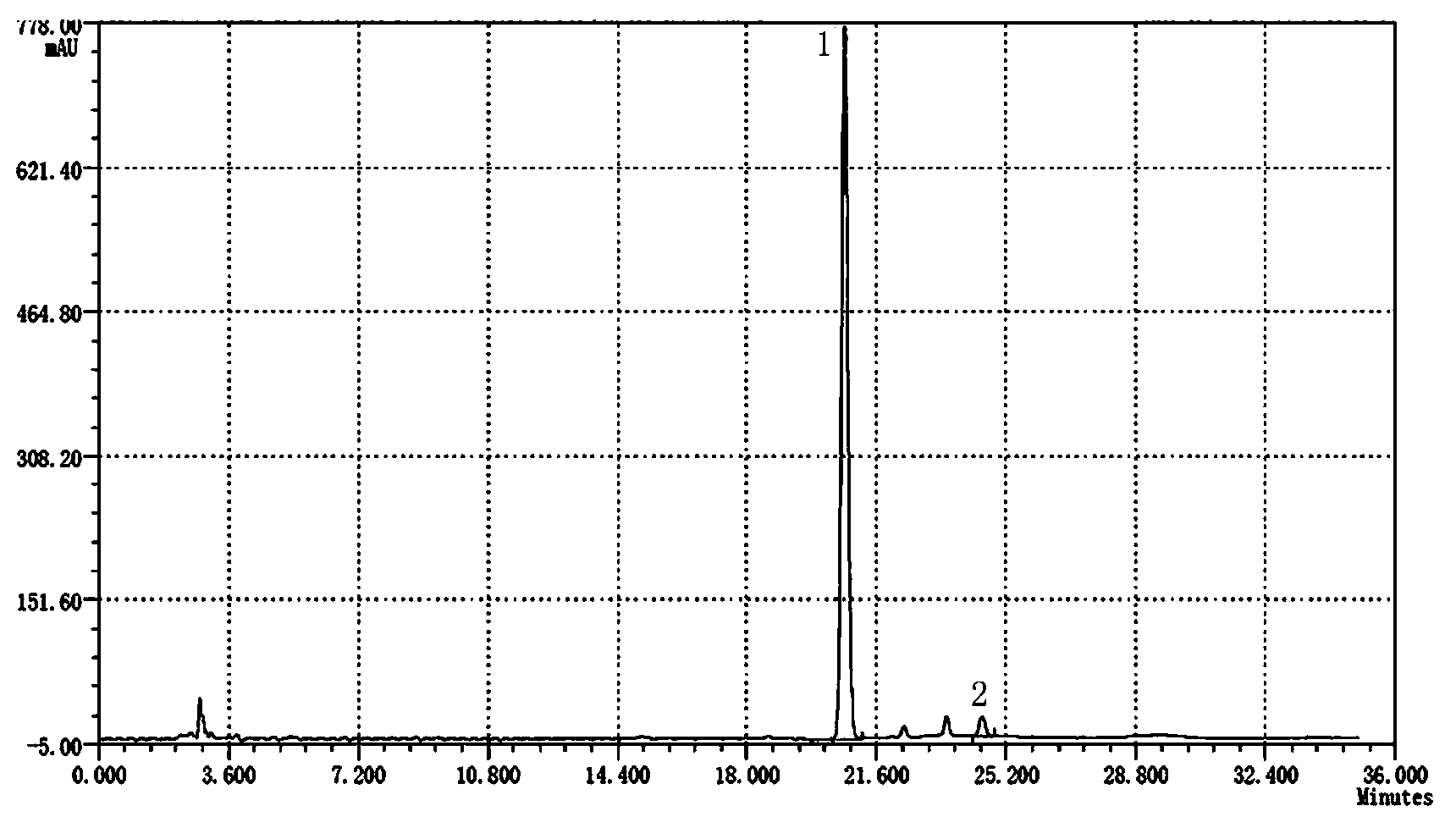Gene segment with coded and highly-active trans-4-hydroxyl-L-prolyl hydroxylase and application thereof
A proline hydroxylase and gene fragment technology, which is applied in the fields of enzyme engineering, genetic engineering and biomedicine, can solve the problems of complex medium components, difficult separation and purification, and low transformation efficiency, and achieves good industrial application prospects and transformation. The effect of shortened time and increased conversion rate
- Summary
- Abstract
- Description
- Claims
- Application Information
AI Technical Summary
Problems solved by technology
Method used
Image
Examples
Embodiment 1
[0030] Example 1 Gene optimization of trans-4-hydroxyl-L-proline hydroxylase and construction of engineering strains
[0031] (1) Optimization of gene codons
[0032] The gene after codon optimization is attached Figure 1 Shown in SEQ ID No.1, named as p4hyd .
[0033] (2) Truncation of gene length
[0034] Design gene truncated primers as follows:
[0035] 5'-3' (SEQ ID No.4 and SEQ ID No.5)
[0036] Upstream primer: 5′GT GAATTC ATGCTGACCCCGACCGAACTG3′ (the underlined italic part is the EcoR I restriction site)
[0037] Downstream primer: 5′CT CTCGAG CTAGGTGGCGTCACGAGCAGC3′ (the underlined italic part is the Xho I restriction site)
[0038] The truncated gene was amplified by polymerase chain reaction (PCR), cloned and constructed into the expression vector pET-M-3C, and verified by sequencing. The obtained gene sequence is shown in SEQ ID No.2, and the corresponding amino acid sequence is shown in SEQ ID No.3.
[0039] The PCR reaction system is as follows: ...
Embodiment 2
[0057] Example 2 Expression and Biotransformation Efficiency Detection of Recombinant Plasmids in Engineering Bacteria
[0058] Activate the single clones of the engineering strains containing the two recombinant plasmids respectively, in LB medium, activate and culture for 3-4 generations at 28°C, and cultivate to OD 600 0.5-0.8, add 0.1-0.4mM IPTG, and induce protein expression at 25-30°C for 4-10h. Collect the bacteria by centrifugation, discard the supernatant, resuspend each 1g of bacteria in 10mL-15mL transformation system containing substrate (200mM L-proline, 200mM α-ketoglutaric acid, 6mM ferrous sulfate, 6mM L-ascorbic acid , 80mM MES pH 6.5 and 1% Nonidet P-40), shake the reaction at 28°C for 40-80 hours, centrifuge to remove the bacteria, and detect the conversion of L-proline in the supernatant to trans-4-hydroxy-L by HPLC -The conversion rate of proline, as shown in table 1. Under the same conditions, P4Hyd and P4Hyd 1-257 The highest conversion rates were 91....
PUM
| Property | Measurement | Unit |
|---|---|---|
| conversion efficiency | aaaaa | aaaaa |
Abstract
Description
Claims
Application Information
 Login to View More
Login to View More - R&D
- Intellectual Property
- Life Sciences
- Materials
- Tech Scout
- Unparalleled Data Quality
- Higher Quality Content
- 60% Fewer Hallucinations
Browse by: Latest US Patents, China's latest patents, Technical Efficacy Thesaurus, Application Domain, Technology Topic, Popular Technical Reports.
© 2025 PatSnap. All rights reserved.Legal|Privacy policy|Modern Slavery Act Transparency Statement|Sitemap|About US| Contact US: help@patsnap.com



